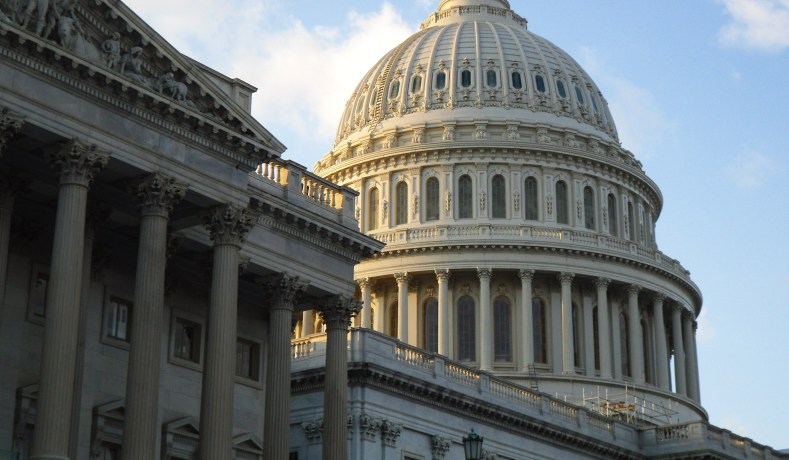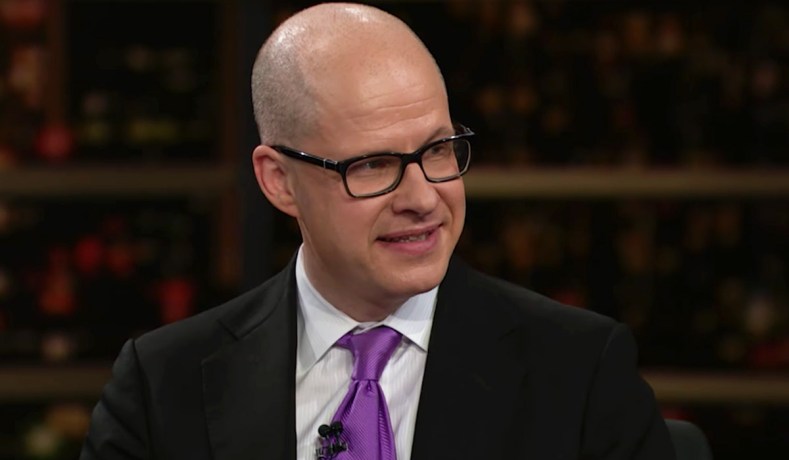

Most changes in party control have seen the party that held the White House lose the House.
There are a lot of reasons to think that the Democrats’ new House majority will prove as unstable over the medium-to-long term as their last one, which they built up in 2006 and 2008 only to see it annihilated in 2010. A lot of the shift to the Democrats, especially in traditionally Republican suburbs, was driven by personal disapproval of President Trump, and many blue-state suburbanites were still upset about the Republican tax bill capping the state-and-local-tax (SALT) deduction:
Democrats swept four Republican-held districts in Orange County, Calif., where at least 40 percent of taxpayers claim the SALT tax break, defeating a pair of Republican incumbents and winning seats vacated by Representatives Ed Royce and Darrell Issa. Those districts include longtime Republican strongholds, like Newport Beach, and rank among the country’s largest users of the state and local tax break.
Representative Barbara Comstock lost a seat in Northern Virginia, where more than half of taxpayers claim the SALT deduction, by nearly 13 points. Representative Erik Paulsen of Minnesota, a huge champion of the tax bill, lost by about the same margin in a district where 40 percent of taxpayers claim the deduction.
In addition, a number of new House members ran as moderates and pledged not to back Nancy Pelosi for speaker. Democrats may tell themselves that they rode a blue wave of progressivism to victory, but New Jersey suburbanites who voted for Chris Christie twice are not exactly the vanguard of the proletariat. These voters may well prove less willing to sign on to a long-term relationship with the Democrats as the party’s economic and tax agenda gains power. Moreover, the House map will be redrawn after the 2020 census in time for the 2022 midterms, with seats migrating out of the Northeast and into places like Texas, Florida, Arizona, and Montana.
But regardless of the specific causes of the Democratic takeover of the House, history is against the Republicans’ regaining control as long as Trump is president. The House has changed party control 29 times in U.S. history. Let’s take a look at the circumstances:

For simplicity here, I’m grouping the non-Democratic parties (the Federalists, the Whigs, and John Quincy Adams’s National Republicans) under the same banner as the Republicans. That’s admittedly a bit artificial in two cases, those of John Quincy Adams and John Tyler. John Quincy Adams was a former Federalist, and the faction that coalesced behind him in 1824 would grow into the Whigs, while the faction of his opponent (Andrew Jackson) would become the Democrats, but the Democrats’ loss of the House in 1824 is hard to pin on outgoing incumbent James Monroe, given that John Quincy Adams was Monroe’s secretary of state and the election was waged as a contest of factions nominally within the same party. (The Democrats would take the House back in 1826, as voters rebelled against what they saw as a corrupt deal that gave John Quincy Adams the presidency.) The Whigs also lost the House in the 1842 midterm under Tyler; while elected on a Whig ticket, Tyler was never actually a Whig.
Anyway, with those caveats, 24 of the 29 changes in party control have seen the party that held the White House lose the House. Seventeen of those were midterm losses. Six saw the president’s party lose both the House and the White House in a presidential-election year. In the other case, in 1792, President George Washington was reelected unanimously, but the nascent opposition took over the House (the first time the House changed control).
The trend has been even more pronounced since the 1856 emergence of the Republican party. Since 1858, 16 out of 18 changes in House control have gone against the party in the White House. The only exceptions have been Harry Truman winning back the House, in the year of his reelection in 1948, and James Garfield (the last president elected directly from the House) reclaiming the House for Republicans in 1880. In Garfield’s case, however, the incumbent Republican president (Rutherford B. Hayes) was leaving after just one term, having been “elected” by a dubious backroom deal with the Democrats to end Reconstruction. Hayes had lost the House in the 1878 midterm, again thanks in part to voter anger at the legitimacy of the circumstances of his election, but his retirement gave the Republicans a fresh start.
The other three examples of the sitting president’s party winning the House all involved a new president. In 1856, James Buchanan replaced another one-term president of his own party, Franklin Pierce, and won back the House from the ad hoc “Opposition party,” which in 1856 was for the first time known as the Republican party. In 1848, the Whigs took over the presidency from James K. Polk, who retired after one term (having lost the House in his midterm), but the Democrats won back the House. The split decision suggests the extent to which the new Whig president, Zachary Taylor, had been elected on the basis of his personal popularity as a hero of the Polk-led Mexican War. And in 1796, the Federalists retook the House behind the election of John Adams to succeed Washington — not a reflection on the revered Washington so much as the first general election to feature an openly partisan system.
Some of the exceptions involved very narrow majorities, sometimes when the two-party system was in flux. The anti-administration faction went from a 54–51 majority to a 59–47 Federalist majority in 1796. The Whigs went from a 116–110 majority to a 113–108 Democratic majority in 1848. The “Opposition party” had just 100 out of 234 House members in a chaotic chamber entering 1856, and came out with 94.
But at the end of the day, if you are looking for examples of regaining control of the House without jettisoning an incumbent president, either in a presidential or midterm year, there is only one time in U.S. history it’s been done: 1948. It’s a complicated parallel. When Harry Truman became president in April 1945, just three months into his tenure as vice president, he inherited a once-massive Democratic coalition that had been decaying for almost a decade by the time Franklin D. Roosevelt won his fourth consecutive presidential election. The coalition’s internal tensions, and public demand for an opposition-party check, had been suppressed during the war but exploded in a midterm wave in 1946 that saw Republicans capture the House and Senate, both for the first time since 1931. Republicans flipped 13 Senate seats and 57 House seats. But Republicans overplayed their hand in Congress, pushing conservative legislation on a country that hadn’t seen any such thing in two decades, while underplaying their hand in the presidential election, nominating the same colorless East Coast moderate (Tom Dewey) who had lost to FDR in 1944. Truman’s party split three ways in the presidential race (Strom Thurmond won four states as the Dixiecrat candidate, while Henry Wallace ran as the Progressive-party candidate), but while Truman’s popular-vote victory was somewhat modest, his party gained 75 House seats and nine Senate seats.
In his own reelection campaign, Trump may do well to study how the feisty, populist Truman not only overcame historic trends of his own favoring his defeat, but even won five states (Ohio, Wisconsin, Iowa, Colorado, and Wyoming) that Dewey had won in 1944. But when you have only one example in all of American history and it’s tied to the long FDR majority, it’s hard to generalize lessons. Undoubtedly, congressional Democrats were helped by carrying Thurmond and Wallace voters down-ticket, as they won 52.6 percent of the popular vote compared with Truman’s 49.6 percent. Also, Trump can’t count on comparable Democratic policy overreach, since unlike the Republicans after 1946, today’s Democrats don’t control the Senate. It’s also unlikely that the Democrats will renominate Hillary Clinton, as Republicans did with Dewey. Voters who left the Republican party in 2018 may not be Democrats, but they are not happy with Trump, and they are unlikely to return until he is gone from the scene.
Breaking down the modern history by number of House seats flipped rather than changes in the majority, Robert Romano takes a less grim view:
In presidential election years dating back to 1900, the White House incumbent party picks up seats in the House 57 percent of the time, with gains averaging 18.7 seats. . . . If Republicans were to pick up seats and win the average number of seats gained in 2020 — it looks like they’ll have about 200 seats in the next Congress — they’d be well within striking distance. President Donald Trump and GOP could take back the House. It’s not impossible.
I agree that it’s not impossible, but the odds are not great. Romano’s examples of the president’s party gaining 20 or more House seats in a presidential election are Republicans in 1904, 1924, 1928, and 1960, and Democrats in 1944, 1948, and 1964. In all but one of those examples (1960), the president’s party also retained the White House, in most cases by lopsided margins. Interestingly, none of them involved a president trying to win his second election: FDR was running for his fourth term in 1944; Teddy Roosevelt in 1904, Calvin Coolidge in 1924, Truman in 1948, and Lyndon Johnson in 1964 were all running for their first election after becoming president from the vice presidency; and 1928 and 1960 were elections at the end of eight-year runs of Republican control of the White House. Also, only 1924, 1948, and 1960 involved recoveries from a major incumbent-party midterm wipeout in the House. (Democrats in 1922 recovered 76 seats from a 300–132 majority Republicans had rolled up in the landslide 1920 election, but Republicans kept the majority.)
In short, none of these races look much like those we now expect in 2020: a president who was elected alongside a strong House majority, had it collapse in his first midterm, and is trying to win it back while running for reelection. Other than Truman, four presidents have run for reelection after losing the House in their first midterm: Barack Obama in 2012, Bill Clinton in 1996, Dwight Eisenhower in 1956, and John Quincy Adams in 1828. The first three got reelected, but none of their parties got the House back until they were safely in retirement.
The 2016 and 2018 elections generally followed historical trends in a number of ways, but history is never an ironclad guide; for example, it was unprecedented in recent history for Democrats riding a midterm wave in the House this year to nonetheless lose four incumbent senators. The number of general elections where the president’s party has picked up 20 or more House seats does, in fact, suggest that Republicans should not be too quick to completely abandon hope. But the rarity of anything like what Republicans will be trying to do in 2020 suggests that Kevin McCarthy should get his caucus used to being the minority, because they will most likely be in that position as long as Donald Trump is the president.



